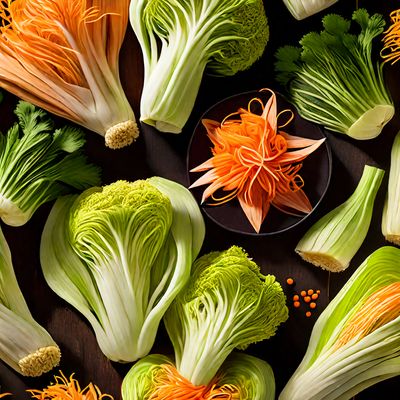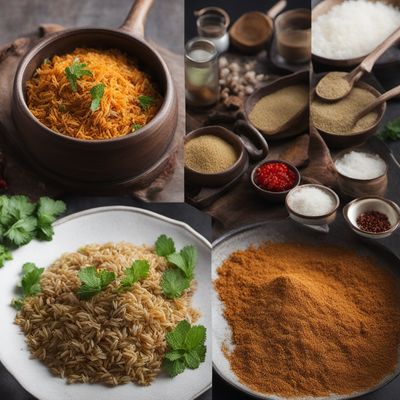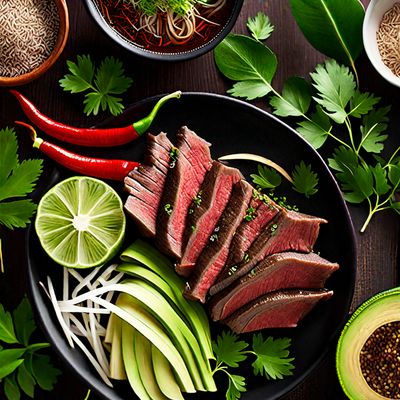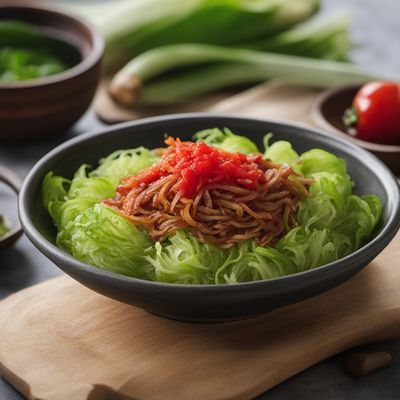
Ingredient
Japanese pepper fruit
Zesty Spice from the East
Japanese pepper fruit is a small, reddish-brown fruit with a distinctive citrusy and numbing flavor. It has a complex taste profile, combining elements of lemon, lime, and a mild peppery heat. The fruit is often ground into a powder or used whole in cooking to add a tangy and aromatic kick to various dishes.
Origins and history
Japanese pepper fruit, or Sansho, has a long history in Japanese and Chinese cuisines. It is native to East Asia and has been used for centuries in traditional medicine and culinary applications. In Japan, it is commonly used in dishes such as sushi, grilled meats, and noodle soups. In China, it is a key ingredient in Sichuan cuisine, known for its bold and spicy flavors.
Nutritional information
Japanese pepper fruit is a good source of vitamins A and C, as well as minerals like potassium and calcium. It also contains essential oils that contribute to its unique flavor and aroma.
Allergens
There are no known allergens associated with Japanese pepper fruit.
How to select
When selecting Japanese pepper fruit, look for whole peppercorns or ground powder that is vibrant in color and has a strong aroma. Avoid purchasing stale or dull-looking pepper fruit, as it may have lost its potency and flavor.
Storage recommendations
To maintain the freshness and flavor of Japanese pepper fruit, store it in an airtight container in a cool, dark place. Whole peppercorns can be stored for a longer period compared to ground powder, which tends to lose its potency over time. It is recommended to grind the peppercorns just before use for maximum flavor.
How to produce
Japanese pepper fruit can be grown in a home garden, provided the climate is suitable. It thrives in well-drained soil and prefers a sunny or partially shaded location. The fruit can be harvested when it turns from green to red.
Preparation tips
Japanese pepper fruit can be used in various dishes to add a zesty and citrusy flavor. It pairs well with seafood, grilled meats, and vegetables. It is a key ingredient in Japanese seven-spice blend (Shichimi Togarashi) and is often sprinkled over rice, noodles, or soups for an extra kick of flavor.
Culinary uses
Japanese pepper fruit is commonly used in Japanese and Chinese cuisines. It is readily available in Asian grocery stores, specialty spice shops, and online retailers.
More ingredients from this category
Recipes using Japanese pepper fruit » Browse all

Al Dente Pasta with Ecuadorian Twist
Ecuadorian-Inspired Al Dente Pasta: A Fusion of Italian and Ecuadorian Flavors

Mexican-style Kimchi
Spicy and Tangy Mexican Kimchi: A Fusion of Flavors

Javanese-style Ssamjang
Spicy Peanut Ssamjang: A Javanese Twist on a Korean Classic

Ainu-inspired Ahuatle Pancakes
Savory Delights from Ainu Cuisine: Ahuatle Pancakes with a Twist

Ainu-inspired Spiced Rice with Local Ingredients
Hokkaido Spice Rice: A Fusion of Ainu and Pakistani Flavors

New Mexican Style Spring Rolls
Southwestern Spring Rolls with a Spicy Twist

Budae Jjigae - New Mexican Style
Spicy Sausage Stew with a Southwestern Twist

Puerto Rican Style Ramen
Caribbean Fusion Ramen: A Taste of Puerto Rico in a Bowl

Latin American Pho
Saboroso Pho: A Latin Twist on a Vietnamese Classic

Ainu-style Paradeiskraut
Savory Tomato Cabbage Delight: Ainu-inspired Paradeiskraut

Ecuadorian Beef Manhattan
Savory Beef Delight: Ecuadorian Style

Soulful Beef Pho
Soulful Beef Pho: A Hearty Twist on a Vietnamese Classic